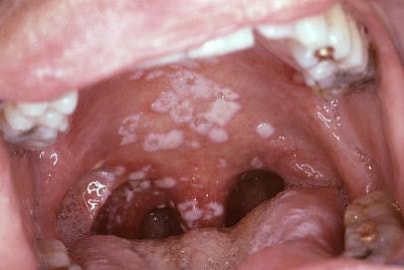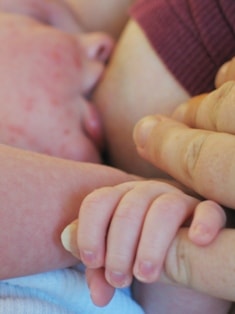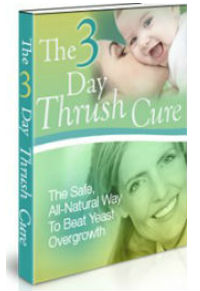Just because you are suffering from oral thrush or candidiasis it does not mean that you are alone in that battle. In fact my dear friend, this type of yeast infection is one of the most common that could affect the young, the middle aged and the elderly. Opposing the common belief that men are actually more susceptible with this type of infection, women can also get oral thrush.
Do you still feel confused and have a much deeper curiosity about candidiasis? Well, you are definitely not alone. Let me start with a few basic, easy to understand facts that you should know about this type of yeast infection.
The medical condition called “Thrush” or “Oral Candidiasis” is a mouth infection that is caused by an overgrowth of a fungus called Candida Albicans. This type of fungus normally exists in every human beings body within normal conditions. With candida albicans’ population kept under control and maintaining a certain PH balance, this fungus isn’t at risk in creating any health problems for an individual. But once a person has a weak immune system or the fungus’ normal environment is altered, this infection can be triggered.

Other factors that may spark this infection are the following:
- Having poor oral hygiene
- People who wear complete dentures
- Being very young (infants) and elderly
- Having an existing medical condition that may weaken the immune system such as (HIV or AIDS)
- Using medications or chemotherapy that may weaken the immune system
- People with diabetes or have high levels of sugar in their blood because the sugar acts as food for the fungus
What are the initial symptoms and what does thrush look like?
Do take note of the initial symptoms of this oral infection. A bad taste in the mouth may be one of the first symptoms you may recognize with a decrease in taste sensation.
What is usually seen in thrush are white and velvety patches that could commonly be seen at the corners of the mouth, the tongue, the gums, roof of the mouth, inside of the cheeks, the throat and even the lips. In a little more severe cases, be cautious in wiping the patchy areas because it may cause bleeding and create a painful wound.
Signs and tests:
Thrush can easily be seen by your doctor or dentist when he/she takes a look at your mouth and tongue. During uncertainty, cultures of the lesions in the mouth can be done and mouth scrapings could also be looked at underneath a microscope.
Infant yeast infections:
 Although you’ve probably heard of adults having thrush, infants are actually more prone to this type of infection. Thrush in infants could be acquired during a delivery in which the infant’s mother has an active yeast infection in the vagina. This infection could also be gained through breast-feeding.
Although you’ve probably heard of adults having thrush, infants are actually more prone to this type of infection. Thrush in infants could be acquired during a delivery in which the infant’s mother has an active yeast infection in the vagina. This infection could also be gained through breast-feeding.
In infants, the symptoms of thrush may be seen usually after 7 to 10 days after delivery of the infant. Babies who have thrush may have discomfort all throughout their mouth and could have trouble eating and may appear fussy because of the pain. Be alert and notify the pediatrician if thrush doesn’t get better after 2 weeks.
If you have thrush or you know someone with it, natural remedies for the infection could definitely be a big help:
- Try out natural mouth rinses. (let the mouth rinse swish around the mouth for at least 15 to 20 minutes. No swallong!): rinse your mouth with warm salt water to draw out the infection and allow the sores to heal naturally. All you have to do is get one cup of warm water and add ½ teaspoon of salt
- A special mix to cure. Another type of homemade mouthwash is by mixing together equal amounts of warm water and apple cider vinegar, a pinch of salt or 4 drops of tea tree oil
- Yogurt. Start eating live-culture yogurt that contains a good amount of Lactobacillus acidophilus to help restore the body’s natural balance. Aim on eating 250mL (8 oz) of plain yogurt a day. Avoid yogurts that are sweetened because the sugar in it could worsen the infection and provide a food source for the fungus. This is a popular natural yeast infection remedy.
 Garlic. Eating garlic regularly with meals can also do wonders because garlic has antifungal effects (eating one to two whole clove(s) daily, adding garlic to other foods you eat or you can try rubbing the garlic clove on the sores) while eating onions can help heal the existing mouth sores
Garlic. Eating garlic regularly with meals can also do wonders because garlic has antifungal effects (eating one to two whole clove(s) daily, adding garlic to other foods you eat or you can try rubbing the garlic clove on the sores) while eating onions can help heal the existing mouth sores- Liquid treatment. To help soothe the discomfort of the mouth sores, I do suggest drinking cool liquids. Water is one of the best remedies because it flushes out toxins in the body. Try taking in at least 8 glasses a day, even aiming for more glasses for maximum benefits
- Baking soda. This is also another natural remedy that you can try out for mild oral candidiasis. Mix a small amount of baking soda and water to create a paste you can use for brushing your teeth
- Avoid carbohydrates. Avoiding complex carbohydrates and sugars to starve the fungus and prevent it from growing
These natural remedies for yeast infection are beneficial and could do wonders. If your yeast infection is mild, natural treatments could be tried out, but in more severe cases make sure to seek medical consultation. But these health tips and natural treatments are proven effective so trying out remedies for yeast infection could make it all worth it without hurting your budget and yourself.
With all the very informative information that I have shared with you in this article on thrush or oral candidiasis, I think that it would be an excellent choice to further enhance your knowledge about the topic and also find out about a clinically proven holistic plan for permanently curing yeast infections naturally and safely with Linda Allen’s best-selling guide.

